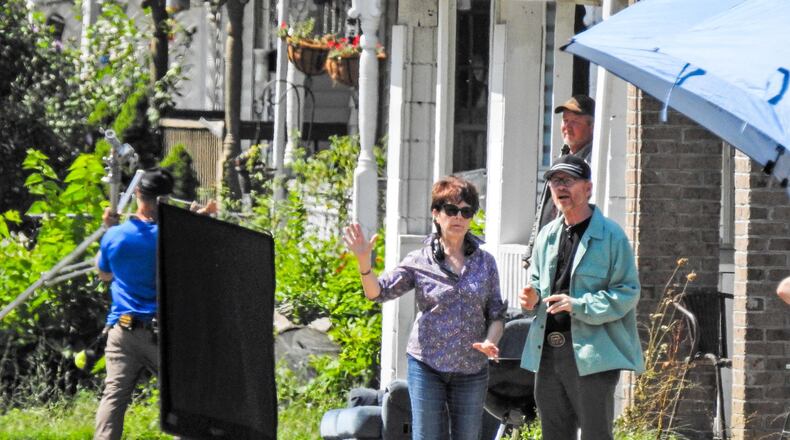Ohio lawmakers also decided to axe a feature that allowed movie producers to “transfer” or sell the tax credit to someone else. And projects will be evaluated and ranked based on competitive criteria twice a year. Previously credits were assigned according to who applied first and when money was available.
MORE: Monroe grad’s movie to make premiere next month in Cincinnati
Steve Colwell, production coordinator for Film Hamilton, said attracting movie productions “lives and dies” on available tax credits. He said Hamilton has lost a few movie projects to Kentucky and Louisiana because Ohio couldn’t match their higher tax credits.
Film Hamilton was founded in 2012 and saw its first production one year later, Colwell said. He said 13 movies have been partially shot in Hamilton, including four in 2019.
Monroe native Chase Crawford, 23, whose latest movie “Moondance” has received a limited theatrical release with a premiere next month at Bogart’s in Cincinnati, said when he’s producing a movie, he considers financial benefits of tax credits because he has to keep the “investors safe.”
It’s important, he said, to find the “middle ground” that provides the best incentives but also allows the story to be told. Since he’s from Ohio, and the state “holds a special place” in his heart, he’d like to shoot every movie here.
But, he said, everyone wants to shoot the movie in their home state, so it sometimes comes down to finances.
Lisa Grigsby, executive director of FilmDayton, said expanding the credit to apply to live theater productions dilutes it, but other changes strengthen the program.
The credit allows up to $40 million per year in tax breaks. It refunds 30 percent of what is spent in Ohio. Since its inception, $120.7 million has been refunded, though $250 million had been authorized.
Last year in Butler County, crews worked in Hamilton filming scenes for the Mark Ruffalo movie “Dark Waters.” Scenes from the movie were also filmed Cincinnati.
Also last year, scenes for “Hillbilly Elegy,” a feature film by Netflix Productions, were shot around Middletown. The “Hillbilly Elegy” book was written by Middletown native J.D. Vance. The film, directed by Ron Howard, features stars Amy Adams, Glenn Close and Gabriel Basso.
A Cleveland State University study found that between 2011 and 2015, Ohio spent $32.6 million on the tax credit, applied to 31 projects that generated $22 million in tax revenues but also helped sustain 1,729 part- or full-time jobs with a labor income impact of $70.6 million. The study was paid for by the Greater Cleveland Film Commission.
While the tax credit has helped 119 projects since 2009, Ohio is competing against more than 30 states that offer similar tax breaks. California, New York and Georgia land 75 percent of the projects, according to a study by Pennsylvania’s Independent Fiscal Office.
Moviemaker magazine recently named Cincinnati and Cleveland as two of the best cities in the country to make movies.
“Ohio’s 30% tax credit has cemented its spot as a thriving film destination for the foreseeable future,” the magazine said.
Policy Matter Ohio says the motion picture tax credit is an expensive, inefficient subsidy. In Ohio, it’s a refundable tax credit — meaning if the value of the credit exceeds the tax bill, the state writes a check to the awardee. Until this year, Ohio’s tax credit was also transferable — something lawmakers decided to cancel.
Wendy Patton, a Policy Matters Ohio researcher, said getting rid of transferability was a good move but overall, the tax credit remains a bad deal for taxpayers because it fails to move the needle on Ohio’s share of the movie production industry. “These tax credits are just gravy for movie production companies going where they’d go anyway,” Patton said. “We would suggest a very close review of the tax credit.”
She added that Ohio should give close scrutiny to all 134 tax breaks in state law because they cost almost $10 billion a year in foregone revenue.


